Interior designers share the 10 biggest mistakes people make when decorating a living room
Rachel Murphy

- Insider spoke with designers to find out the top mistakes people make when decorating a living room.
- One major mistake is not having enough lights or surfaces in the space.
Buying a rug that is too big or too small for your living room will mess up the entire space.
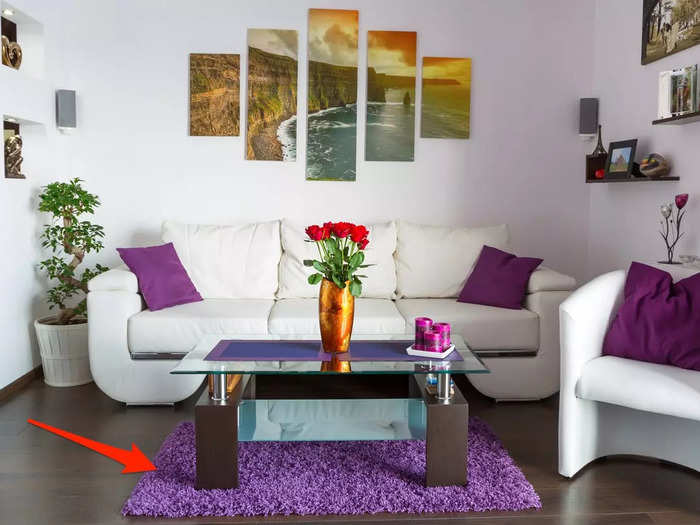
Gena Kirk, the vice president of design at KB Home, told Insider that it's important to ensure that a rug does more than just work within the design scheme of your home — it needs to fit the room you intend to use it in.
"A rug that is too large will look overwhelming in the space and can make the room appear smaller," she said. "A rug that is too small forces your furniture to be closer together, leaving the room feeling unbalanced and [creating] the feeling of wasted empty space."
Kirk recommended using painter's tape and exact measurements to create mock outlines on your floor so you can envision how the rug might look in your space.
Placing your couch up against a wall could make the room look smaller.
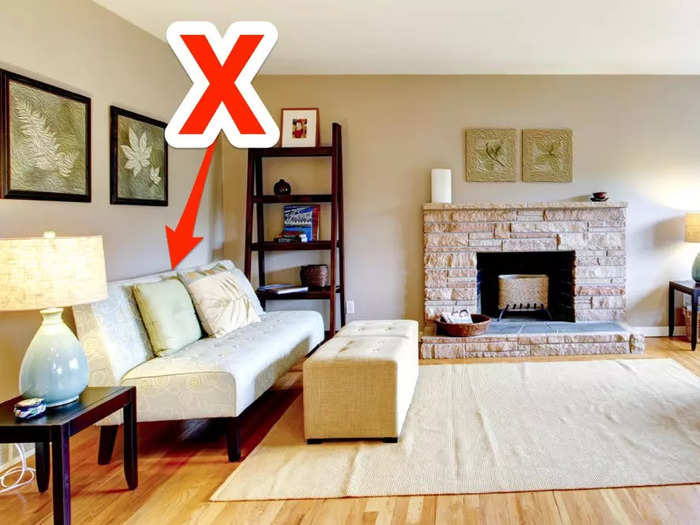
Lauren White, the owner and principal designer of Ellen W. Interior Concepts, told Insider that instead of placing your sofa up against the wall, you should consider "floating" it.
"Floating furniture means that you place pieces off the wall, sometimes in the middle of the room," she said. "When you do this in your living room, it makes the room feel and look larger because you will be able to walk around it."
Using pieces of furniture that are too "matchy-matchy" might make your home look like a showroom.
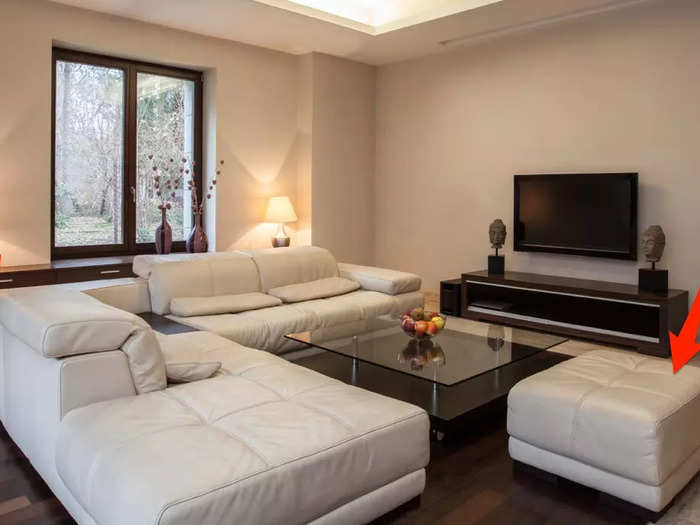
Walk into a furniture showroom, and you're likely to find that almost everything is sold in sets — including living-room furniture.
"The easiest thing would be to purchase an entire set, but don't do it," White said. "A space that looks too 'matchy-matchy' isn't a good thing."
Using separate pieces instead of sets can make your space look "curated," White said, which "elevates the style in your home."
Your television should be hung in a practical spot, not somewhere high up.
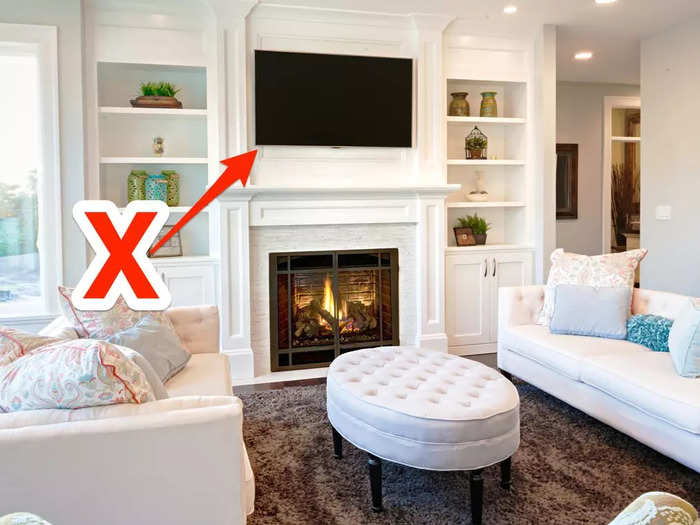
Design is more than having a home that looks pretty — you should also take ergonomics into account.
"I know that placing your TV over the fireplace is the 'it' thing to do, but it does a huge disservice to your neck," White said.
"Your TV should be eye-level to where you are sitting," she told Insider. "You should not have to look up."
If you don't prioritize comfort, your living room could end up feeling bleak.
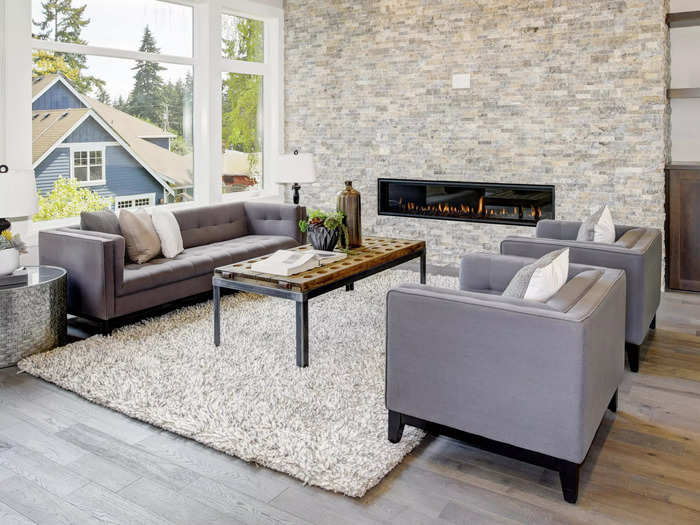
People often think you have to sacrifice comfort for style, and it reflects in their living space, Sonja Rasula, a former interior designer on HGTV's "Home to Go" and TLC's "Trading Spaces" who founded Unique Markets in Los Angeles, told Insider.
"Comfortability is one of the biggest factors that make a living room," Rasula said. "Even if you are balling on a budget, adding a cozy blanket or a few plush pillows will make all the difference."
You might want to have multiple light sources in your living room to create ambiance.
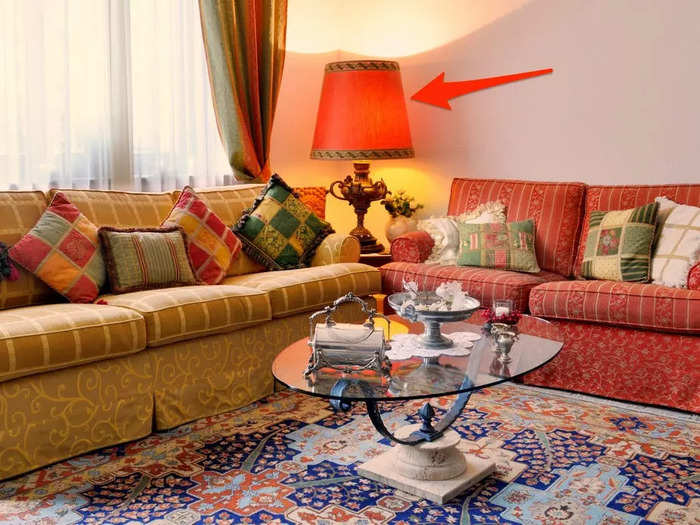
Living rooms are multifunctional, and your lighting choices should reflect that, Sara Ray, an interior designer based in Nashville, told Insider.
"There should be overhead lighting on a dimmer that can be used to move throughout the space or dimmed to provide the right ambiance for a party," she said. "You want to have plenty of secondary lighting so that tasks like reading can be done while sitting in the space."
She suggested placing accent lighting on bookshelves, on a fireplace mantel, or above artwork to create layers of lighting in your living room.
Choosing furniture that's too big or too small for your space can make the room feel off.
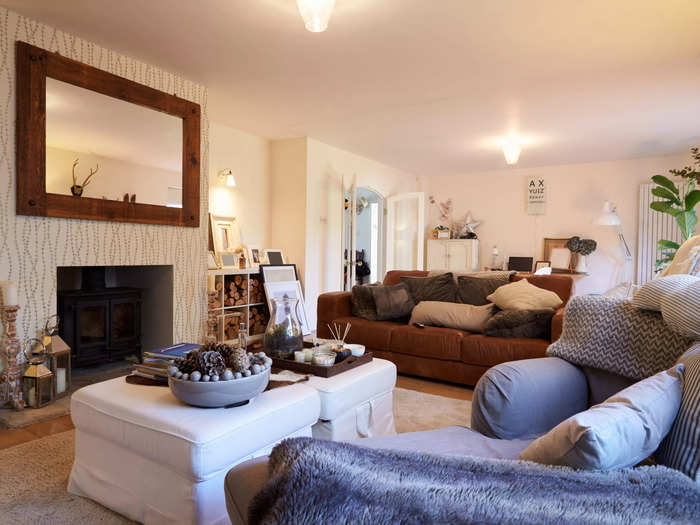
Picking out the right furniture is important, but where you put it is equally essential to designing a living room.
"Large pieces in a small space can make the room look even smaller, where small pieces in a large space can leave too much empty space," Rasula told Insider.
For larger living rooms, she recommended leaving 30 to 36 inches between furniture pieces. Smaller spaces, like apartments, can get away with 18 to 24 inches between pieces.
"This amount of distance will ensure you're not overcrowding your living room while at the same time will help maximize space for a smaller living room," she said.
Incorporating furniture that doesn't match the rest of your home might throw off the space.
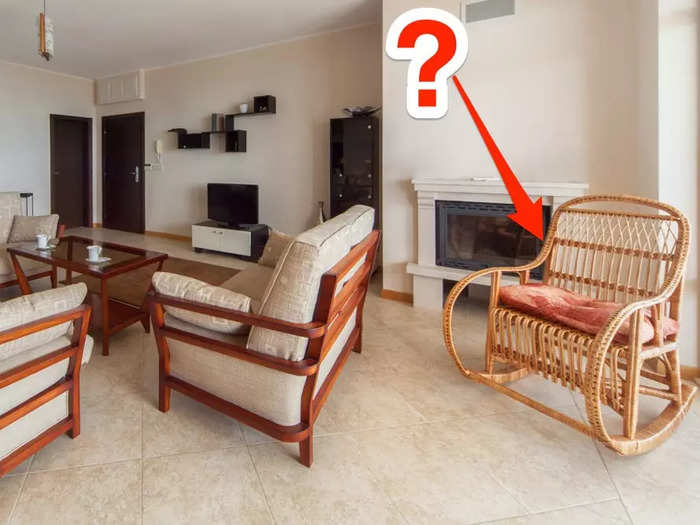
Kirk said her clients often want to incorporate a piece of furniture in their living room that doesn't really mesh well with the overall style of their home.
She said that while this should be avoided, there's an exception to the rule.
"If it is because they love it, I say buy it," she said. "I believe that if you love something you can make almost anything work, and that's part of what makes a person's home uniquely theirs — a home filled with furniture they love."
You should use shelving space, but avoid packing it with large items.
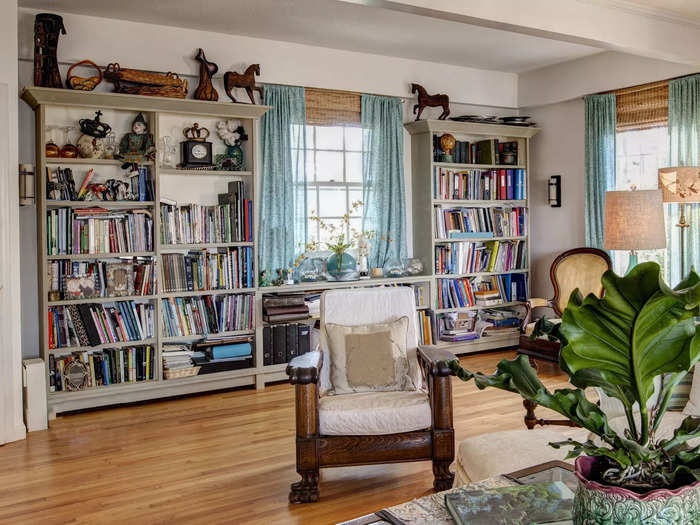
When it comes to shelving in your living room, there's a right way and a wrong way to go about decorating it, according to Rasula.
"You should utilize shelving space as much as possible, but try and avoid overhang, which could cause the space to look overcrowded," she told Insider.
She explained that overhang is when items that are too large for the shelf or bookcase, which makes them stick out over the ledge.
Not having enough tables and other surfaces to set your things on can be impractical.
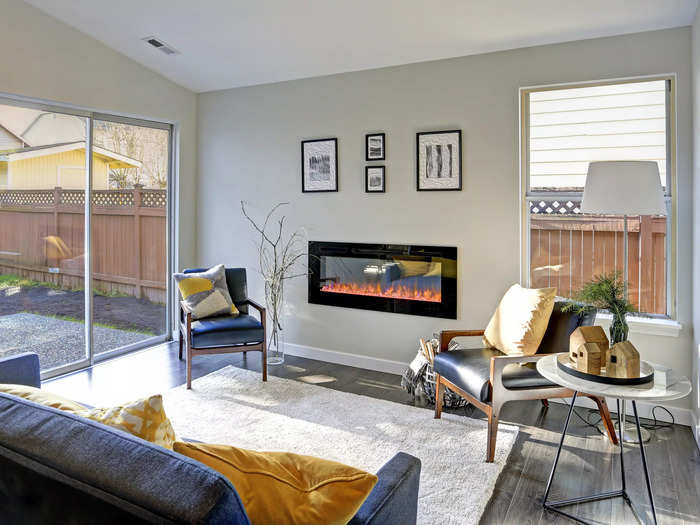
Since a living room is often well-trafficked, you should probably have ample places to set down your drinks, books, and other items, Ray told Insider.
"To create a functional living room, you should have a surface that you can easily reach from wherever you're sitting," she said.
- Read more:
- Interior designers reveal the 10 decorating rules you should never break
- Interior designers reveal the 12 biggest mistakes people make when decorating a bedroom
Interior designers share 10 popular trends that never look as good in real life
Popular Right Now
Popular Keywords
Advertisement